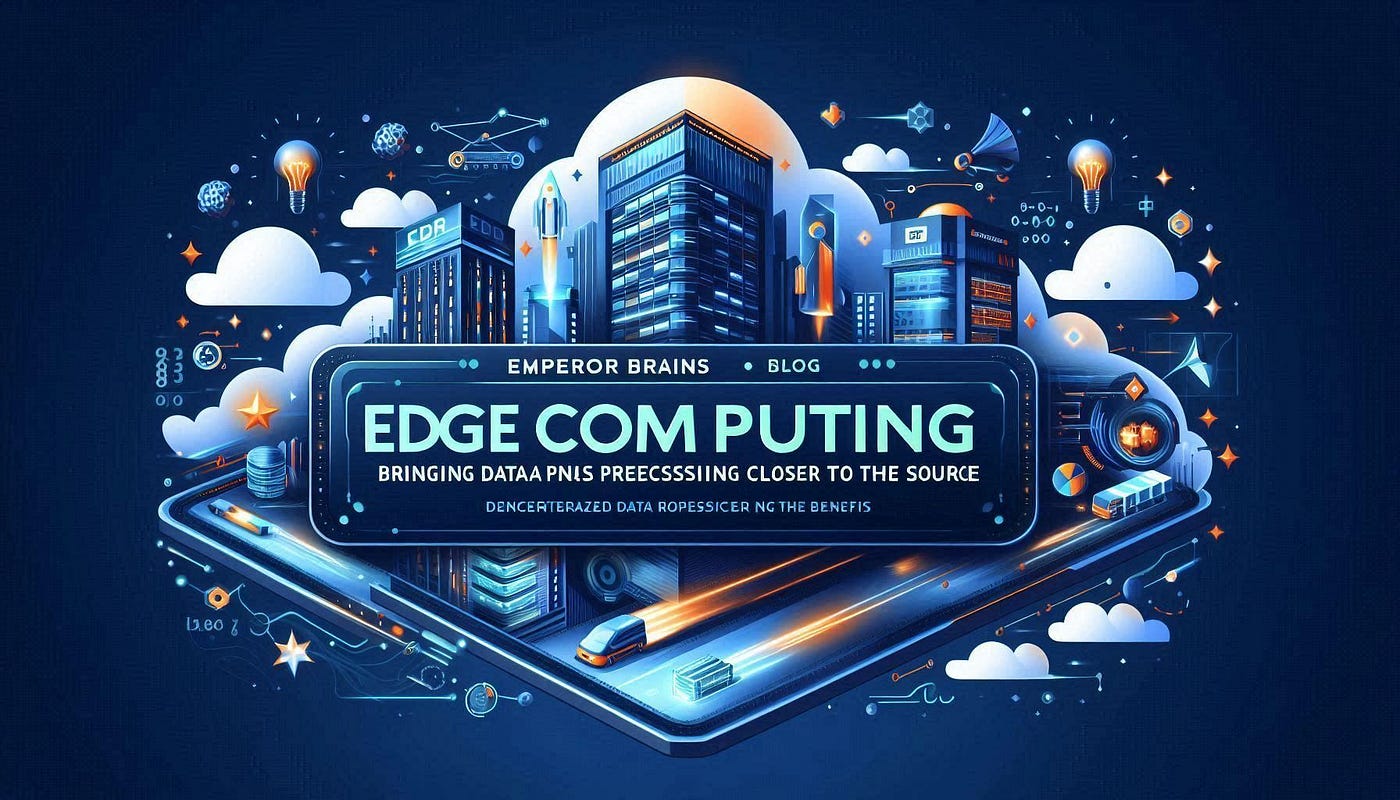
In today’s rapidly evolving digital landscape, Edge Computing is emerging as a transformative technology that promises to revolutionize the future of computing. Coupled with next-generation connectivity, particularly 5G, Edge Computing is poised to unlock new possibilities and efficiencies across various industries. This blog explores the profound impact of Edge Computing and its role in shaping the next-generation connectivity landscape.
What is Edge Computing?
Edge Computing refers to the practice of processing data near the source of data generation rather than relying on centralized data centers. By bringing computation and storage closer to the devices that generate and use data, Edge Computing reduces latency, improves speed, and enhances the overall performance of applications. This decentralized approach to data processing is critical for applications that require real-time responses and instantaneous decision-making.
The Role of Next-Generation Connectivity
Next-generation connectivity, exemplified by 5G networks, is a crucial enabler of Edge Computing. The high-speed, low-latency, and high-bandwidth capabilities of 5G networks facilitate real-time data processing and seamless communication between devices. The synergy between Edge Computing and 5G connectivity is set to drive innovations and efficiencies across various sectors, creating a new paradigm for the future of computing.
Advantages of Edge Computing
- Reduced Latency: By processing data at the edge of the network, latency is significantly reduced. This is essential for applications such as autonomous vehicles, industrial automation, and smart healthcare systems that require real-time responses.
- Enhanced Security: With data processed locally, there is less need for data transmission over networks, reducing the risk of interception and ensuring better data privacy and security.
- Bandwidth Efficiency: Edge Computing optimizes bandwidth usage by reducing the amount of data transmitted to centralized data centers, resulting in lower costs and more efficient network operations.
- Scalability: The decentralized nature of Edge Computing allows for scalable and flexible deployment of applications and services, tailored to specific needs and locations.
Impact on Various Industries
- Healthcare: Edge Computing enables real-time monitoring and analysis of patient data, facilitating quicker diagnostics, personalized treatments, and improved patient outcomes.
- Manufacturing: In smart factories, Edge Computing provides real-time analytics and predictive maintenance, leading to increased efficiency, reduced downtime, and optimized production processes.
- Retail: Retailers leverage Edge Computing for personalized marketing, real-time inventory management, and smart checkout systems, enhancing customer experiences and operational efficiency.
- Smart Cities: Edge Computing supports smart city initiatives by enabling real-time data processing for traffic management, energy distribution, public safety, and other critical urban applications.
Future Prospects
The combination of Edge Computing and next-generation connectivity is set to drive the future of computing. Key areas to watch include:
- Internet of Things (IoT): As IoT devices proliferate, Edge Computing will be essential for managing and processing the vast amounts of data generated, ensuring efficient and effective operations.
- Artificial Intelligence (AI): Edge AI will enable real-time decision-making and analytics at the edge, opening new possibilities for applications in various domains, from autonomous systems to personalized services.
- Augmented Reality (AR) and Virtual Reality (VR): The low latency and high-speed capabilities of Edge Computing will enhance AR and VR experiences, making them more immersive and interactive.
What Is Multi-Access Edge Computing (MEC)?

In the rapidly evolving landscape of technology, Multi-Access Edge Computing (MEC) stands out as a pivotal innovation driving the future of computing. As we move towards an era defined by Edge Computing and next-generation connectivity, MEC is emerging as a critical enabler of new applications and services. This blog explores the concept of MEC, its significance, and its role in shaping the future of computing.
Understanding Multi-Access Edge Computing (MEC)
Multi-Access Edge Computing (MEC) is an architectural concept that brings computation and data storage closer to the end-users and devices at the edge of the network. Unlike traditional cloud computing, where data processing occurs in centralized data centers, MEC processes data locally. This proximity to the data source reduces latency, enhances real-time capabilities, and improves the efficiency of network operations.
MEC integrates with the network infrastructure, leveraging existing cellular and wireless networks to provide a seamless, high-performance computing environment. By deploying compute resources at the edge of the network, MEC enables faster data processing and more efficient use of bandwidth.
The Role of Next-Generation Connectivity
Next-generation connectivity, particularly 5G, plays a crucial role in the adoption and effectiveness of MEC. The high-speed, low-latency, and high-bandwidth capabilities of 5G networks are essential for supporting the real-time data processing and instantaneous communication that MEC requires. The combination of Edge Computing and next-generation connectivity is poised to unlock a new era of innovation and efficiency.
Key Benefits of MEC
- Reduced Latency: By processing data closer to the end-user, MEC significantly reduces latency. This is crucial for applications that require real-time responses, such as autonomous vehicles, augmented reality (AR), and virtual reality (VR).
- Improved Performance: MEC enhances the performance of applications by minimizing the distance data needs to travel, resulting in faster data processing and quicker response times.
- Enhanced Security and Privacy: Processing data at the edge reduces the need for data transmission over the network, thereby decreasing the risk of interception and improving data security and privacy.
- Optimized Bandwidth Usage: MEC reduces the amount of data that needs to be transmitted to centralized data centers, optimizing bandwidth usage and lowering operational costs.
- Scalability and Flexibility: The decentralized nature of MEC allows for scalable and flexible deployment of applications and services, tailored to specific needs and locations.
Applications of MEC
- Smart Cities: MEC supports smart city initiatives by enabling real-time data processing for traffic management, public safety, and efficient energy distribution.
- Healthcare: MEC enables real-time monitoring and analysis of patient data, facilitating quicker diagnostics, personalized treatments, and improved patient outcomes.
- Industrial Automation: In manufacturing, MEC provides real-time analytics and predictive maintenance, increasing efficiency, reducing downtime, and optimizing production processes.
- Retail: Retailers can use MEC for personalized marketing, real-time inventory management, and enhanced customer experiences through smart checkout systems.
- Entertainment and Media: MEC enhances the delivery of high-quality, low-latency content for streaming services, online gaming, and immersive AR/VR experiences.
Future Prospects
The synergy between MEC and next-generation connectivity is driving the future of computing. Key areas to watch include:
- Internet of Things (IoT): As IoT devices proliferate, MEC will be essential for managing and processing the vast amounts of data generated, ensuring efficient and effective operations.
- Artificial Intelligence (AI): Edge AI, powered by MEC, will enable real-time decision-making and analytics at the edge, opening new possibilities for autonomous systems and personalized services.
- 5G and Beyond: The continued evolution of 5G and future connectivity technologies will further enhance the capabilities of MEC, enabling even more advanced applications and services.
By processing data closer to its source, Edge Computing offers reduced latency, improved bandwidth efficiency, enhanced security, scalability, and resilience. As industries across the board embrace this transformative technology, the potential for innovation and growth is boundless.


